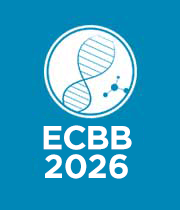Title: Bio-fermentation for enhanced dihydroxyacetone production from crude glycerol using gluconobacter oxydans NBRC 14819
Abstract:
In the present study, bioconversion of glycerol using Gluconobacter oxydans NBRC 14819 to a high value-added product, Dihydroxyacetone (DHA), was examined with a perspective of medium optimization using One factor at a time (OFAT) approach. As per previous literature, glycerol, yeast extract, MgSO4·7H2O, (NH4)2SO4, KH2PO4, and CaCO3 were revealed as the feasible components that could augment the high productivity. OFAT led to the screening of a range of these potential media components. The Crude glycerol is the main byproduct released after transesterification and an inexpensive carbon source used as substrate in this study, consisting of 84.57% glycerol, 7.6% ash, 2.54% methanol, 3.19% water content, and 2.1% Matter Organic Non-Glycerol (MONG). Culturing Gluconobacter oxydans using crude glycerol as a substrate can be challenging due to impurities that may adversely affect metabolism and DHA yield. An inhibitory effect was observed at an initial glycerol concentration of 100 g/l. Yeast extract provides specific growth factors and amino acids essential for DHA production from glycerol, that are absent in other nitrogen sources like peptone and corn steep liquor. Different yeast extract concentrations did not significantly alter the maximum DHA production, but it did lead to an increase in the specific growth rate. Ammonium salt by itself was inadequate for fermentation, but when paired with yeast extract, it yielded a slight increment in the DHA production. The maximum DHA production from crude glycerol (50 g/L) is 38.89 g/L, with a product yield of 0.78, while pure glycerol achieves a maximum yield of 0.83. The findings from this study will aid future media optimization efforts using artificial neural networks, enabling the evaluation of optimal media component dosages in a time-efficient manner. Implementing a fed-batch strategy along with real-time monitoring in the bioreactor could potentially lead to even higher DHA production.



